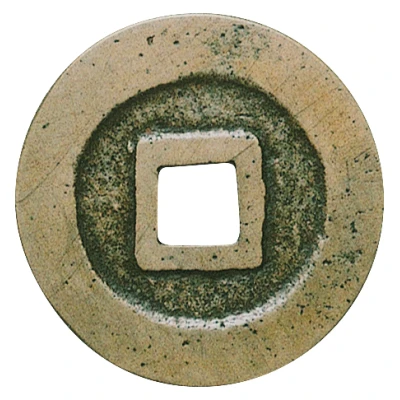


© Christopher Li (CC BY-NC-SA)
1 Mon "Kan'eitsūhō" Copper alloy; 佐 "Sa" reverse ND
| Copper | 2.75 g | 24.5 mm |
| Issuer | Japan |
|---|---|
| Type | Standard circulation coin |
| Years | 1714-1781 |
| Value | 1 Mon |
| Currency | Mon (683-1953) |
| Composition | Copper |
| Weight | 2.75 g |
| Diameter | 24.5 mm |
| Thickness | 0.8 mm |
| Shape | Round with a square hole |
| Technique | Cast |
| Orientation | Medal alignment ↑↑ |
| Demonetized | Yes |
| Updated | 2024-10-05 |
| Numista | N#161646 |
|---|---|
| Rarity index | 62% |
Reverse
Lettering: 佐
Translation: Sa[do]
Edge
Plain
Comment
DHJ# 4.117 was cast by the people (but apparently not illegally), which explains the poorer worksmanshipInteresting fact
One interesting fact about the 1 Mon "Kan'eitsūhō" coin from Japan is that it was issued during a time of great economic change in the country. The coin was minted during the Edo period, which saw the rise of a strong centralized government and the development of a robust economy. The coin's design, featuring a copper alloy and a "Sa" reverse, was meant to symbolize the country's growing prosperity and economic power. Despite its small denomination, the 1 Mon coin played an important role in the everyday transactions of Japanese citizens during this time.



